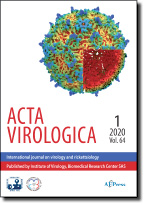Acta Virologica Vol.65, No.1, p.82-88, 2021
|
| Title: Optimization of a cellular HBV infection model for use in high-throughput drug screening |
| Author: Nadezhda P. Kartashova, Svetlana I. Iarovenko, Ekaterina A. Glubokova, Ilya A. Potemkin, Anastasia A. Karlsen, Irina A. Leneva, Karen K. Kyuregyan, Alexey A. Ryakhovskiy, Mikhail I. Mikhailov |
|
Abstract: Hepatitis B virus (HBV) is a partially double-stranded DNA virus that specifically targets hepatocytes. It is considered a major health issue due to its high prevalence and the life-threatening consequences of chronic infection, including liver cirrhosis and hepatocellular carcinoma. Despite widespread vaccination against HBV, millions of people live with chronic HBV infection. Existing antiviral therapies fail to achieve full HBV elimination, so most patients with the disease require lifelong treatment. The search for new antiviral therapy strategies is hindered by the limited availability of in vitro HBV infection models that are able to support the full HBV life cycle. Therefore, the development and optimization of cellular models are crucial to the search for drugs effective against HBV. In this study, we optimized an in vitro HBV infection model consisting of two cell lines: HepAD38 cells, which are able to produce infectious HBV; and HepG2-NTCP cells, which are susceptible to HBV infection. We showed that prolonged production of HBV in the “donor” cells and HBV inoculation of the “acceptor” cells simultaneously with seeding improves the established procedure. This modified protocol was proven effective in experiments involving compounds with known activity against HBV, suggesting its utility for future high-throughput screening.
|
|
| Keywords: HBV; HBV in vitro models; HepG2-NTCP; HepAD38 |
|
|
Published online: 23-Feb-2021
|
| Year: 2021, Volume: 65, Issue: 1 |
Page From: 82, Page To: 88 |
doi:10.4149/av_2021_110
|
|
 download file download file |
|
|
|
|
 download file
download file
